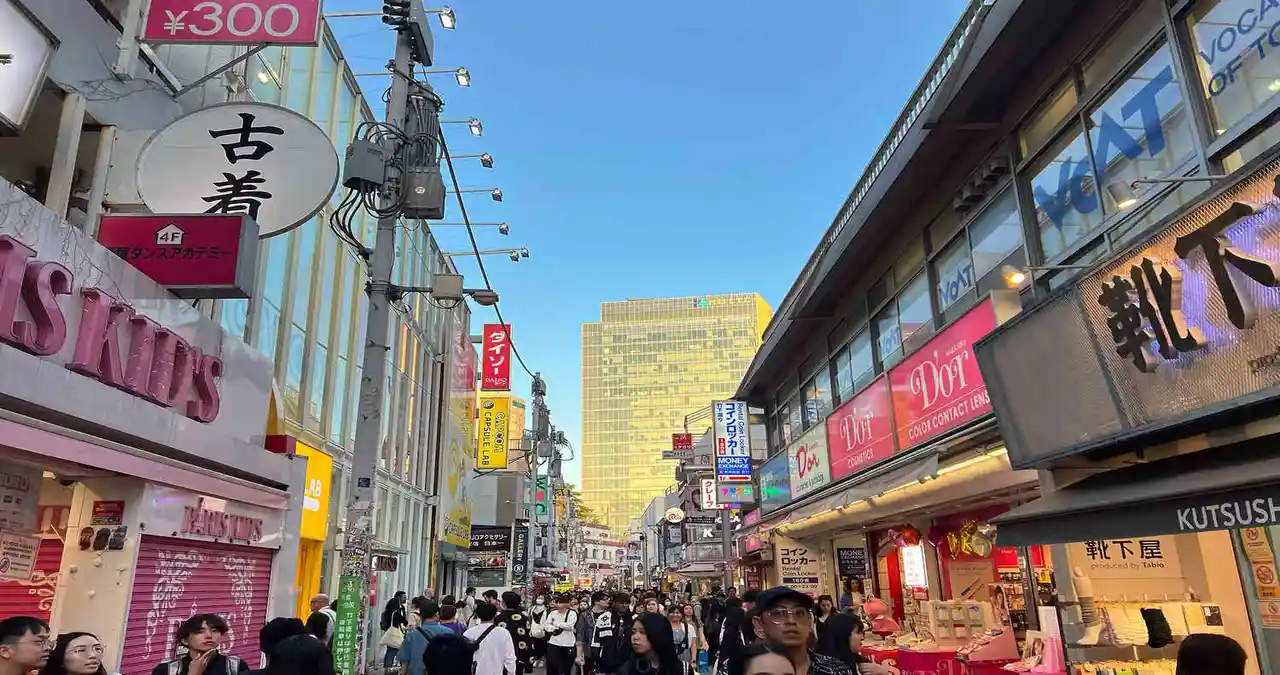Flights to Tokyo, Japan Looking to experience the vibrant culture, futuristic cityscapes, and serene traditions of Japan’s capital? Booking flights to Tokyo, Japan, is your first step toward an unforgettable journey. Whether you’re planning a spontaneous getaway, a business trip, or a well-researched vacation, the process of finding and booking the best flights can make all the difference. With its seamless blend of tradition and technology, Tokyo offers an atmosphere like nowhere else and the flight to get there can be just as exciting if planned right.
In this guide, we’re diving deep into everything you need to know about flights to Tokyo, Japan from how to get the best deals and what airlines offer superior service, to what to expect once you land in this stunning city. Whether you’re a seasoned traveler or heading abroad for the first time, you’ll walk away with all the insights you need to make your Tokyo adventure stress-free and memorable.
Why Tokyo Is One of the Top Travel Destinations in the World
Tokyo isn’t just Japan’s capital it’s a thriving metropolis that’s captured the hearts of travelers worldwide. It’s the kind of place where you can sip matcha in a peaceful teahouse by morning and find yourself under neon skies in Shibuya by night. This city has a rhythm that appeals to every kind of traveler.
One of the main reasons people are booking flights to Tokyo, Japan, is the city’s dynamic mix of the old and the new. You’ll find ancient shrines just steps away from cutting-edge technology stores, and centuries-old traditions thriving alongside the latest culinary innovations. With attractions like the historic Asakusa district, bustling Akihabara, and the tranquil Meiji Shrine, Tokyo is a place that invites endless exploration. And let’s not forget the food whether you’re grabbing sushi from a conveyor belt or enjoying high-end Kaiseki dining, Tokyo is a culinary paradise.
Choosing the Best Time to Fly to Tokyo
Timing is everything when planning your flight to Tokyo. Not only can it impact the cost of your ticket, but it also sets the tone for your entire trip. Tokyo experiences four distinct seasons, each offering a unique experience. Spring brings cherry blossoms and mild temperatures, while autumn offers stunning foliage and crisp air. These periods are considered peak seasons, so expect flights to Tokyo, Japan, to be in high demand.
If you’re traveling on a budget, consider flying during the off-season. Winter months (excluding the New Year period) tend to be less crowded and often come with lower airfare. Summer, though hot and humid, is another time you might score good deals. It’s all about weighing what you want to do in Tokyo against what you’re willing to pay for your ticket. Keep an eye on school holidays and national holidays in Japan, as flights can spike during these periods due to local travel.
Finding the Best Deals on Flights to Tokyo, Japan
Scoring the best deal on flights to Tokyo, Japan, isn’t about luck it’s about strategy. The key is flexibility. If your travel dates are adjustable, use fare comparison tools that allow you to see prices across a range of dates. This way, you can target the most affordable days to fly.
Another tip is to book early, especially if you’re planning to travel during peak seasons. Many airlines open their schedules up to a year in advance, and locking in a ticket early can help you beat price hikes. Set up fare alerts with trusted travel websites and keep tabs on flight trends. Sometimes, booking a round trip ends up being more economical than a one-way fare. Don’t forget to check budget airlines flying into nearby airports like Narita or Haneda, as some offer significantly lower rates with just a bit of added travel time on the ground.
Major Airlines Offering Flights to Tokyo, Japan
When it comes to flying into Tokyo, you’ve got options plenty of them. Major international carriers like Japan Airlines (JAL), All Nippon Airways (ANA), Delta, American Airlines, United Airlines, and Singapore Airlines frequently service routes to Tokyo. Each has its perks, so choosing one depends on your priorities: comfort, amenities, frequent flyer miles, or just the lowest fare.
ANA and JAL, Japan’s flagship carriers, are known for their exceptional hospitality, clean cabins, and on-time performance. If you’re looking to immerse yourself in Japanese culture before even landing, these airlines provide a wonderful introduction. Other international carriers may offer codeshare agreements with local airlines, giving you a wide range of options when it comes to connecting flights and flexible schedules. Some airlines also offer multi-city tickets, which allow you to explore other parts of Asia before or after your Tokyo visit.
Tokyo’s Two Major Airports: Narita and Haneda
When booking your flight to Tokyo, you’ll usually be choosing between two airports: Narita International Airport (NRT) and Haneda Airport (HND). Both serve the city of Tokyo, but each offers a different experience and level of convenience.
Haneda is closer to the city center, making it a popular choice for travelers who want a quick transfer to downtown Tokyo. It’s well-connected by train and bus, and often used for domestic flights and select international routes. Narita, on the other hand, is located further out in Chiba Prefecture but handles a higher volume of international flights. Narita is known for its spacious layout and broad selection of shops and restaurants. Your choice may come down to airline availability and the time of your arrival or departure, but both airports are Flights to Tokyo, Japan and foreigner-friendly.

What to Expect During Your Flight to Tokyo
Flights to Tokyo, Japan, typically involve a long-haul journey, especially from North America, Europe, or Australia. Most direct flights can range anywhere from ten to fourteen hours, depending on your departure point. Fortunately, modern aircraft are equipped with amenities that make these long flights more manageable.
You can expect meal service, in-flight entertainment, and comfort kits on many international carriers. Airlines like ANA and JAL go the extra mile with Japanese-inspired meals and superior service, while others may offer lie-flat seats and upgraded cabins for premium-class travelers. Be sure to check luggage policies before flying some budget-friendly carriers may charge extra for checked bags or seat selection. A neck pillow, compression socks, and noise-canceling headphones can go a long way in making your journey smoother.
Visa and Travel Requirements for Entering Tokyo
Before boarding your flight to Tokyo, Japan, it’s essential to understand the entry requirements based on your nationality. Many travelers from Western countries, including the United States, Canada, and most of Europe, can enter Japan visa-free for short-term stays. However, this is subject to change, and it’s best to double-check current regulations through official government sources or the Japanese embassy website.
You’ll also need a valid passport, typically with at least six months of validity from your date of arrival. Keep in mind that Japan has strict immigration policies, and visitors may be asked to show proof of a return ticket or accommodation bookings upon arrival. With recent global events, health declarations or travel insurance may also be part of the entry process, so staying updated before your departure is always a smart move.
Packing Tips for Your Trip to Tokyo
Once your flight to Tokyo, Japan, is booked, it’s time to start packing. Tokyo’s weather varies dramatically depending on the season, so you’ll want to pack accordingly. Spring and fall are pleasant, making light jackets and comfortable walking shoes ideal. In summer, breathable clothing and sun protection are essential, while winter calls for coats, scarves, and maybe even thermal layers.
Don’t forget your essentials passport, travel documents, chargers with the appropriate plug adapters, and any prescription medications. It’s also helpful to carry a phrasebook or language app if you’re not familiar with Japanese, although many people in Tokyo, especially in service roles, speak at least basic English. Consider packing a reusable water bottle, a compact umbrella, and space in your luggage for all the souvenirs you’re sure to pick up while exploring.
Making the Most of In-Flight Time
One of the underrated aspects of a long-haul flight to Tokyo, Japan, is the opportunity to reset and recharge. Instead of counting every minute, treat the time as part of your adventure. Load your tablet or laptop with a few shows or movies, bring along a good book or journal, and curate a relaxing playlist to help you drift off.
Some travelers use this time to study Japanese basics, go over their Tokyo itinerary, or simply catch up on rest. Staying hydrated, stretching your legs periodically, and avoiding heavy meals during the flight can help you feel better upon landing. If you’re in an upgraded seat, take full advantage of the amenities offered they’re designed to help ease the jet lag and make the flight part of the overall travel experience.
Arrival in Tokyo: What Happens Next
Once you touch down after your flight to Tokyo, Japan, you’ll pass through immigration, baggage claim, and customs. This process is usually efficient, and signs are marked in English as well as Japanese. Many airports offer free Wi-Fi, currency exchange booths, and SIM card kiosks so you can get connected immediately.
From there, you’ll have several transportation options into the city. Narita offers the Narita Express, Keisei Skyliner, and highway buses, while Haneda is connected by monorail and several train lines. Taxis are available but tend to be expensive, so most travelers opt for public transportation or shuttle services. You’ll also want to grab a Suica or Pasmo card a rechargeable smart card that makes it easy to use trains, buses, and even some convenience stores in the city.




